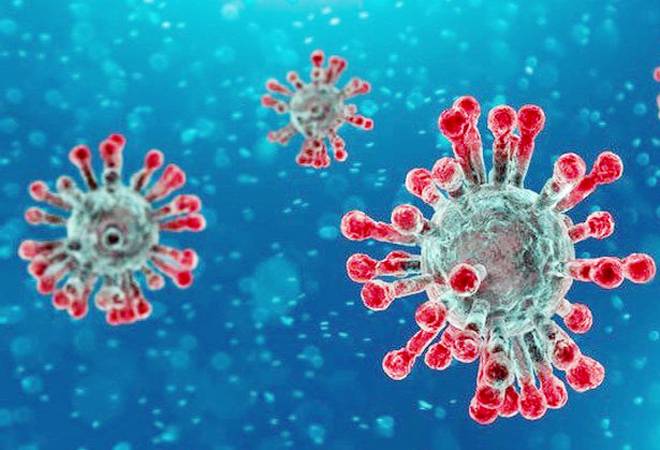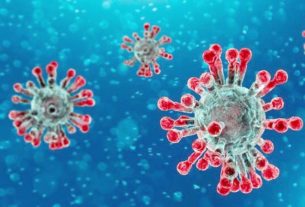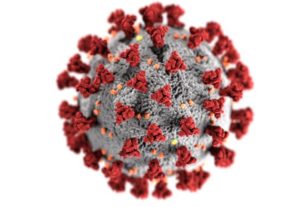From Our Bureau
29th AUGUST 2020
India witnessed a big surge with 76,472 fresh COVID-19 positive cases reported on Saturday, taking the country’s cumulative tally to 34,63,972. The death toll rose to 62,550, with 1,021 fatalities recorded in the last 24 hours.
A significant feature of India’s management of COVID-19 cases is the growing rate of recovered patients. Higher number of patients are recovering and being discharged from hospitals and home isolation (in case of mild and moderate cases). These recoveries are being achieved because of adherence to the “National Standard Treatment Protocol” by all health facilities across the country as well as by regular daily monitoring of positive cases under home isolation.
The COVID-19 recoveries have crossed 26 lakh today. Recovery of 26,48,998 patients has been made possible because of the holistic and strategic policy of TESTING aggressively, TRACKING comprehensively & TREATING efficiently in supervised home isolation and facility isolation, and in hospitals.
In the last 24 hours, 65,050 recoveries have been registered in the country. The Central Government has been regularly interacting with States that are showing higher fatality rates. There is a sharp focus on skilled doctors to man the ICUs. AIIMS New Delhi through its tele-consultation sessions every Tuesday and Friday is building clinical treatment capabilities and skills of the doctors in the States/ Union Territories.
With better ambulance services ensuring reduced response time, focus on Standard of Care and use of non-invasive oxygen, steroids and anti- coagulants, the Recovery Rate has now reached 76.47 percent. As a result, the Case Fatality Rate (CFR) has also been low when compared to the global average. It is on a continuous decline and currently stands at 1.81 percent.
The Recovery Rate of India is following a continuous upward incline whereas the Case Fatality Rate is constantly declining.
The actual case load of the country is the active cases, numbering 7,52,424, which is only 21.72 percent of the total positive cases. They are under active medical supervision. With a consistent and sustained increase in recoveries, the gap between recovered patients and active COVID-19 cases reached nearly 19 lakh.
In its fight against COVID-19 since January 2020, India has crossed another peak. The cumulative tests have seen an unprecedented upsurge and surpassed 4 crore today.
With focussed, consistent and coordinated efforts led by the Central Government and implemented by the State/UT governments, India has set a new landmark of testing 4,04,06,609 people. India has come a long way from conducting just one test from the lab in Pune in January 2020 to crossing 4 crore tests milestone.
The single day tests have also seen a upsurge. Already having achieved the testing capacity of 10 lakh tests per day, 9,28,761 tests were conducted in the last 24 hours.
This has boosted the Tests Per Million (TPM) Population with a sharp increase to 29,280. As is seen in many States/UTs that have increased the testing, the positivity rate is eventually falling with higher levels of testing. The national positivity rate has remained low, i.e. 8.57 percent and is constantly falling.
India is following the strategic approach of TEST, TRACK, TREAT where testing forms the initial and crucial pillar of COVID response and management. It is only by aggressive testing that positive cases are identified at an early stage, their close contacts can be promptly tracked and isolated, and timely and effective treatment can be ensured for those in home isolation and the ones who are hospitalised.
Expanded diagnostic lab network and facilitation for easy testing across the country through several policy measures have given a substantial boost to this upsurge in national testing rates. There are as many as 1,576 labs in the country– 1002 labs in the government sector and 574 private labs. These include: Real-Time RT PCR based testing labs: 806 (Govt: 462 + Private: 344), TrueNat based testing labs: 650 (Govt: 506 + Private: 144) and CBNAAT based testing labs: 120 (Govt: 34 + Private: 86).
Dr Harsh Vardhan chairs 20th
meeting of Group of Ministers (GOM) on COVID-19
Dr. Harsh Vardhan, Union
Minister of Health and Family Welfare, chaired the 20th meeting of the
high-level Group of Ministers (GoM) on COVID-19, here today. He was joined by
Dr S. Jaishankar, Minister of External Affairs, Hardeep S. Puri, Minister of
Civil Aviation, Mansukh Lal Mandaviya, Minister of State, Shipping (Independent
Charge), Chemicals and Fertilizers, Ashwini Kumar Choubey, Minister of State,
Health and Family Welfare and Nityanand Rai, Minister of State, Home Affairs.
Dr. Vinod Paul, Member (Health) Niti Aayog, joined virtually.
At the outset, Dr. Harsh Vardhan expressed satisfaction at the various coordinated efforts of the Central Government and the State/UT governments. “In the month since the last meeting of GoM on 31st July, we have made tremendous strides in containing the disease. As many as 26.4 lakh have already recovered. The country’s Case Fatality Rate is at its lowest 1.81 percent and consecutively Recovery Rate has increased to 76.47 percent,” he pointed out.
He further informed the GOM that with creation of sufficient health facilities, the health infrastructure in the country has been amply strengthened. Also, only 0.29 percent of the cases are on ventilators, 1.93 percent in ICUs and only 2.88 percent of cases are on oxygen.
“A total of 1,576 labs at present have led to an upsurge in testing and the goal of 10 lakhs tests per day has been fulfilled. More than 9 lakh samples were tested in the last 24 hours and this has led to the cumulative total number of tests crossing the 4 crore mark,” he added.
Dr Harsh Vardhan also informed the GOM that more than 338 lakh N-95 masks, 135 lakh PPEs and about 27,000 ventilators have been provided by the Central Government to the States/UTs.
The Union Health Minister instructed the Health Ministry to develop SOPs for the Members of Parliament and the Legislative Assembly sessions comprising COVID protocols and preventive measures. The GOM also expressed concern about the forthcoming festival seasons and advised everyone to adopt safe and COVID appropriate behaviour.
The GoM was briefed on the current status of COVID-19 in India. The global comparison clearly depicted that India has one of the lowest cases per million (2,424) and deaths per million (44) compared to the global average of 3,161 and 107 respectively.
It was noted that despite being resource constrained and densely populated, timely lockdown and rapid augmentation of infrastructure by India have enabled to keep the cases/million and deaths/million considerably lower compared to other countries.
Within the country, eight States (Maharashtra, Karnataka, Andhra Pradesh, Tamil Nadu, Uttar Pradesh, West Bengal, Odisha and Telangana) contribute to around 73 percent of the active caseload, as of today. Moreover, seven States (Maharashtra, Delhi, Tamil Nadu, Andhra Pradesh, Karnataka, Uttar Pradesh and West Bengal) account for 81 percent of total deaths.
The GoM was briefed on the guidance note issued on the bi-directional TB and COVID screening, diabetes management in COVID facilities, etc., and the meeting chaired by Cabinet Secretary with the States where they were advised to ramp up testing and measures were suggested to contain the spread and reduce mortality below 1 percent.
Dr. Sujit Singh, Director, NCDC, presented a detailed report on surveillance efforts undertaken in India during the pandemic through the IDSP (Integrated Disease Surveillance Programme) network. He highlighted the challenges faced and the learnings from the various States.
He also threw light on the trajectory of COVID in some States and elaborated on their response and management. The major concern areas in the country were highlighted. It was mentioned that there needs to be continued attention on promotion of wearing of masks, physical distancing and respiratory etiquettes. Behaviour change communication therefore assumes priority role in COVID management.
Dr. Vinod K Paul, Chairperson of the Empowered Group-1 on Medical Emergency management plan, apprised the GoM of the process of COVID vaccine development in India and around the world.
He stated that 29 candidates, including 2 Indian ones, are in Clinical Trials out of which 6 are in Phase III. In India, Bharat Biotech’s vaccine candidate based on inactivated virus procured by ICMR is in Phase II trial along with Zydus Cadila’s candidate which is based on viral DNA.
The Oxford vaccine candidate developed by Serum Institute of India is already in Phase III trial in Maharashtra and some other States. Dr. Paul also informed the GoM of the progress made by the National Expert Group on Vaccine Administration for COVID-19.
The group is tasked with facilitation of vaccine development, including issues of trial and stockpiling, sorting out issues of financing, risk-management, selection of potential beneficiaries and their order of reference, envisioning logistics, scale up, digital system, defining principles for selecting beneficiary categories, and defining scientific basis for selecting vaccine. Three meetings of the Expert Group have been held so far.
Rajesh Bhushan, Health Secretary, apprised the GoM on the efforts made by the Health Ministry towards mental health during the pandemic. He also stated that the Central Government was in direct communication with the States that were reporting a surge in cases and those with higher mortality rates. These were being guided towards measures that would result in saving lives and speedy recoveries. (eom)


